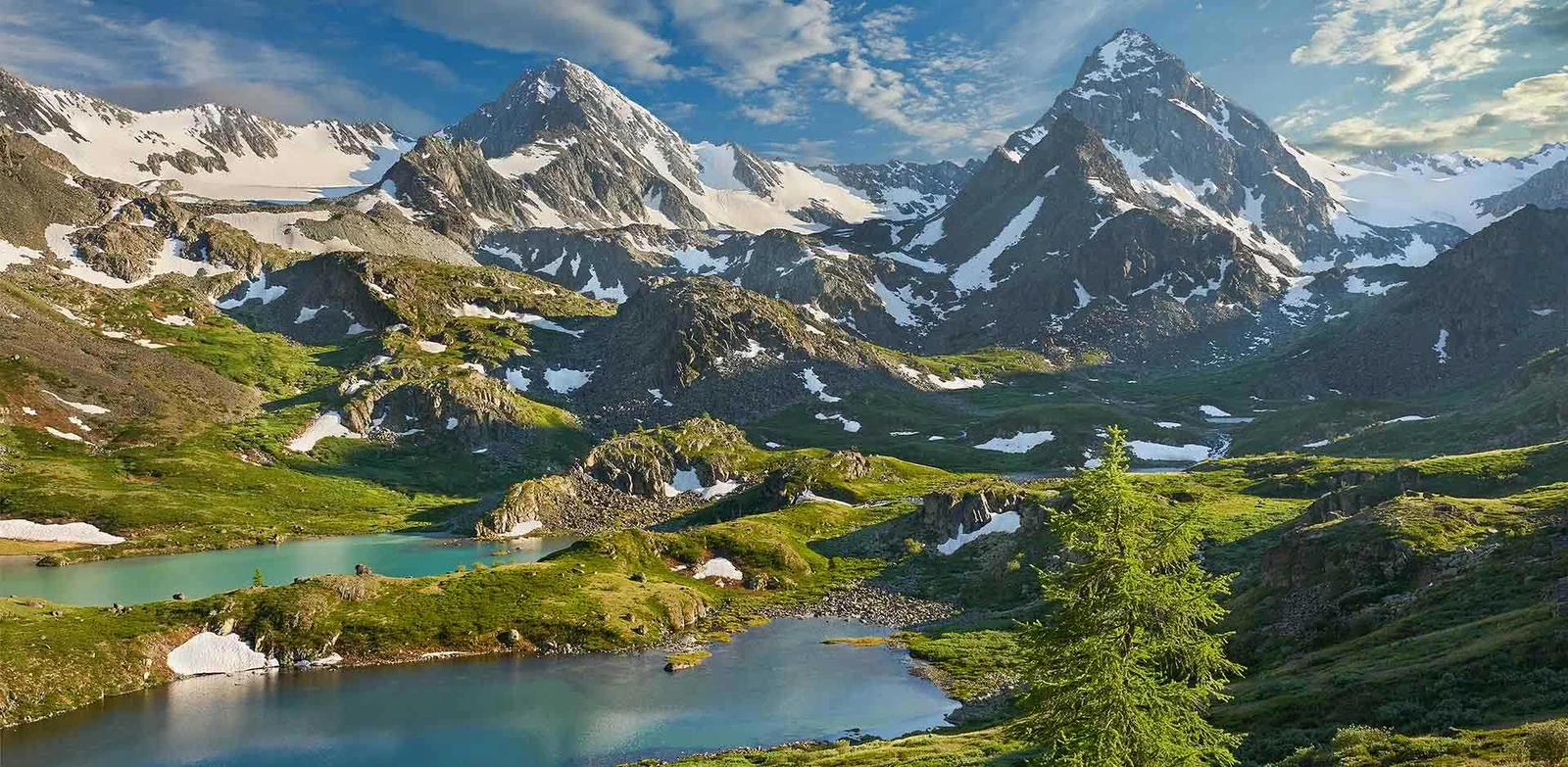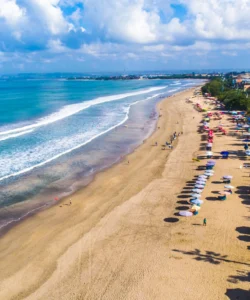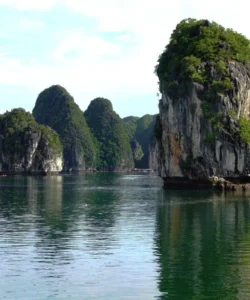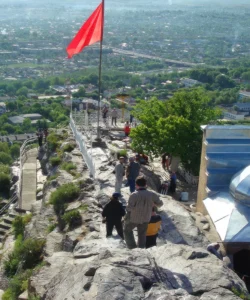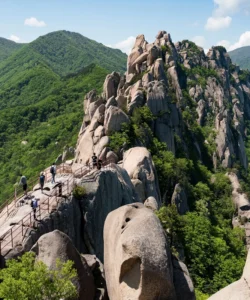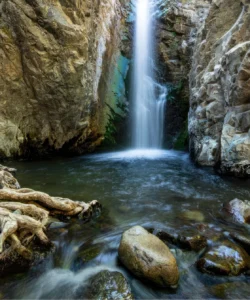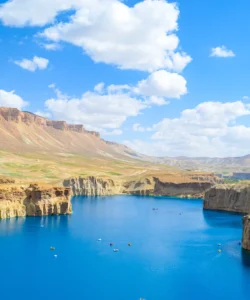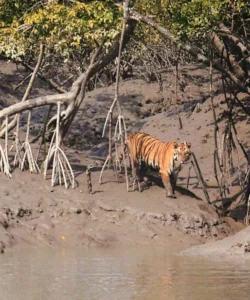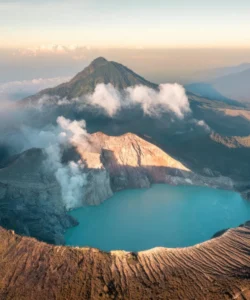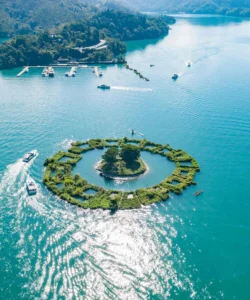The Altai Mountains are a majestic mountain range in Central Asia, forming a natural border where Russia, China, Mongolia, and Kazakhstan converge. Known for their breathtaking beauty, diverse ecosystems, and profound cultural significance, the Altai are a UNESCO World Heritage site and a haven for both nature enthusiasts and those seeking to connect with ancient traditions.
Listen to an introduction about Altai Mountains
![]()
Name: Altai Mountains (Russian: Алтайские горы, Altayskiye gory; Mongolian: Алтайн нуруу, Altain nuruu; Kazakh: Алтай таулары, Altai tawları; Chinese: 阿勒泰山, Ālètài Shān) – The name “Altai” is believed to derive from a Turkic or Mongolian word meaning “gold mountains.”
Location and Geography:
The Altai Mountains stretch approximately 2,000 kilometers (1,200 miles) in a northwest-southeast direction, from the Gobi Desert to the West Siberian Plain. They are a complex system of high peaks, deep valleys, vast plateaus, and extensive river networks.
- Highest Peak: The highest point in the Altai Mountains is Mount Belukha (4,506 meters / 14,783 feet), located on the border between Russia and Kazakhstan. Its twin peaks are perpetually covered in snow and ice, making it a prominent and sacred landmark.
- Glaciers: The higher elevations are home to numerous glaciers, which feed the region’s many rivers, including the Katun, Bukhtarma, and Biya (which are tributaries of the Ob River).
- Lakes: The Altai boasts over 3,500 lakes, many of glacial or tectonic origin, contributing to its stunning scenery. Lake Teletskoye in the Russian Altai is a prominent example.
- Diverse Landscapes: The range encompasses an incredible variety of landscapes, from alpine meadows and tundra at higher elevations to dense taiga forests, and eventually semi-arid steppes and even desert-like conditions at its fringes.
How to get there:
Accessing the Altai Mountains typically depends on which country’s section you wish to visit:
- Russian Altai (Altai Republic): The most common entry point is through Gorno-Altaysk, the capital of the Altai Republic, which has a small airport. Visitors often fly into larger cities like Barnaul or Novosibirsk and then take buses, taxis, or rental cars to reach the Altai region. Organized tours from these cities are also widely available, especially during the summer.
- Mongolian Altai (Altai Tavan Bogd National Park): To visit the Mongolian Altai, one usually flies from Ulaanbaatar to Ölgii (Bayan-Ölgii Province), the westernmost province dominated by Kazakhs. From Ölgii, organized tours (often involving 4×4 vehicles and local guides) are essential to reach the remote mountain areas, including the Altai Tavan Bogd National Park.
- Kazakhstan and China: Access points also exist from the Kazakh and Chinese sides, though these might be less developed for international tourism.
Climate:
The Altai Mountains experience a severely continental climate with extreme temperature variations:
- Winters: Long, brutally cold, and dry, with temperatures often dropping to -20°C (-4°F) and sometimes as low as -40°C (-40°F) or even -60°C (-76°F) in sheltered valleys. Heavy snowfall blankets the higher altitudes.
- Summers: Short but warm, with daytime highs in valleys reaching 20-25°C (68-77°F), sometimes up to 40°C (104°F) on lower slopes. Summer (June-August) is the wettest season, with sudden rain showers and thunderstorms.
- Spring and Autumn: Brief and unpredictable, with rapid temperature changes and early/late snowfalls.
What makes it famous:
The Altai Mountains are famous for:
- UNESCO World Heritage Site: Portions of the Russian Altai (including the Golden Mountains of Altai) are recognized by UNESCO for their unique biodiversity, ancient archaeological sites, and cultural significance.
- Biodiversity Hotspot: It’s a remarkably biodiverse region, home to a wide array of ecosystems and species, including several rare and endangered animals.
- Indigenous Cultures and Shamanism: The Altai is the ancestral home of various indigenous peoples, including the Altaians, Kazakhs, Khakas, and Tuvans. It is considered a spiritual and cultural epicenter for shamanism, with sacred sites, ancient burial mounds (kurgans like Pazyryk, which preserved Scythian mummies and artifacts in permafrost), and petroglyphs scattered throughout.
- Extreme Sports and Adventure: The rugged terrain, pristine rivers, and high peaks make it a popular destination for trekking, mountaineering (especially climbing Mount Belukha), rafting, horseback riding, and even skiing in winter.
- Stunning Scenery: From glaciated peaks and alpine lakes to vast steppes and dense forests, the Altai offers consistently breathtaking and varied landscapes.
- Snow Leopard Habitat: It’s one of the most important habitats for the elusive and endangered snow leopard, along with other unique species.
Differences from some other wonders:
The Altai Mountains stand out from other natural wonders due to their multifaceted nature:
- Transcontinental and Multicultural: Unlike single-country mountain ranges, the Altai spans four countries, fostering a unique blend of Russian, Mongolian, Kazakh, and Chinese cultures, each with distinct traditions and access points to the mountains. This makes it a fascinating nexus of different Central Asian identities.
- Shamanic Heartland: While many natural sites hold spiritual significance for local communities, the Altai is widely regarded as a profound heartland of shamanism, an ancient spiritual practice still active among its indigenous peoples. This deep cultural and religious connection sets it apart from many other mountain ranges.
- Archaeological Preservation (Permafrost Tombs): The Altai contains remarkably preserved archaeological sites, particularly the Scythian kurgans (burial mounds), where bodies and artifacts have been preserved in permafrost for over 2,000 years (e.g., the “Ice Princess” of Ukok Plateau). This level of preservation and the insights it provides into ancient nomadic cultures are rarely found elsewhere.
- Contrast of Landscapes and Climate Extremes: The Altai offers a dramatic transition from arid steppes to high alpine tundra and glaciated peaks within a relatively confined area, experiencing intense continental climate shifts. This sheer variety in a single region is a defining characteristic.
- Home to Unique and Endangered Wildlife: The Altai is a critical habitat for unique and highly adapted species like the snow leopard, Altai argali (wild sheep), Siberian ibex, and the Siberian musk deer. Its role in global conservation efforts for these specific species makes it particularly significant.
In essence, the Altai Mountains are not just a geographical feature but a vibrant tapestry of natural beauty, ancient history, living indigenous cultures, and critical biodiversity.
